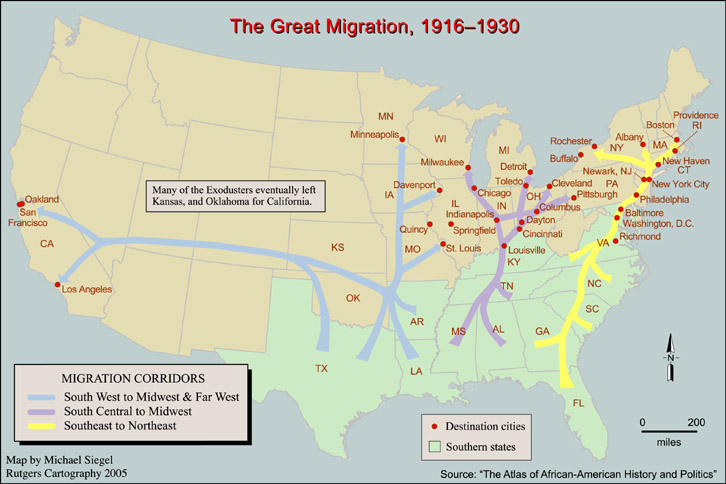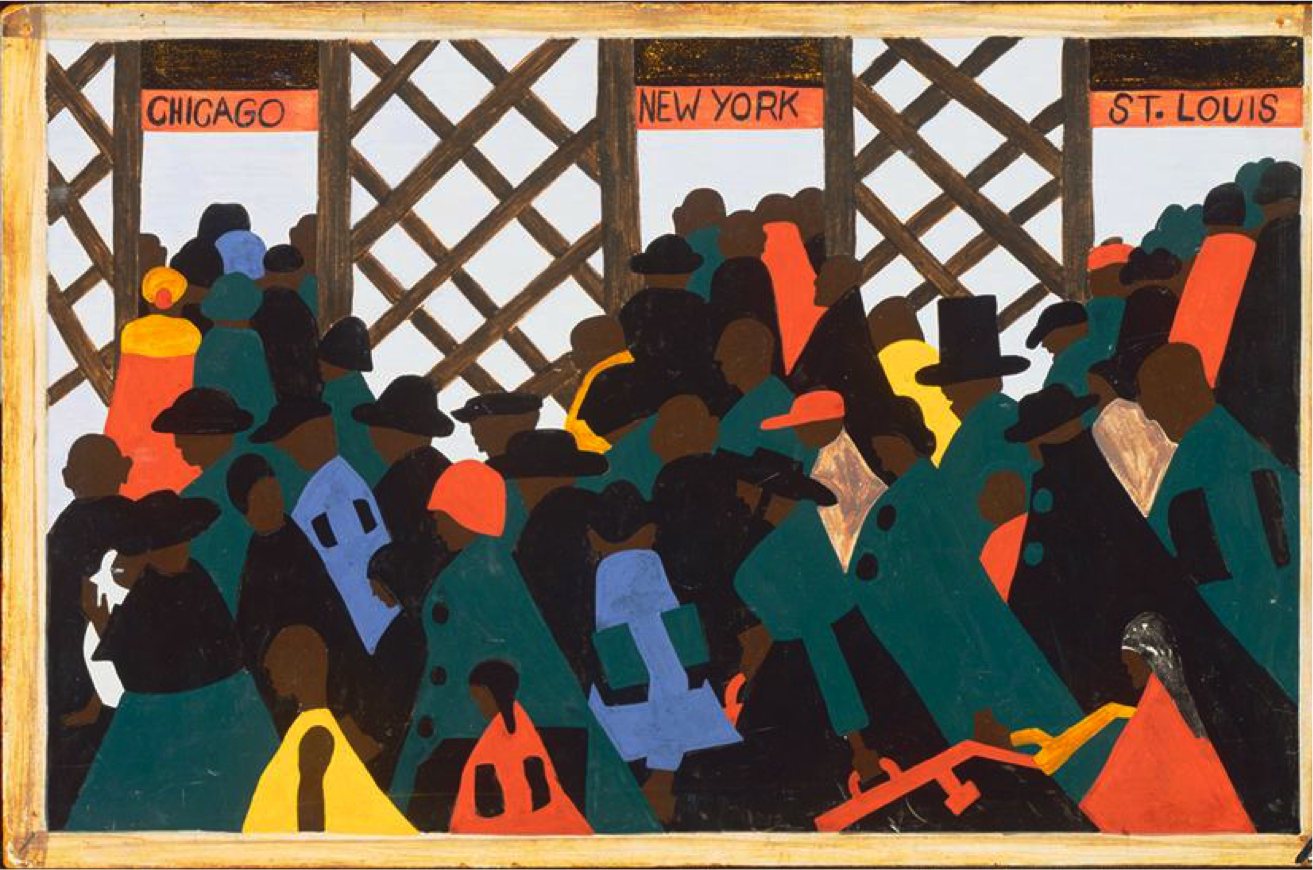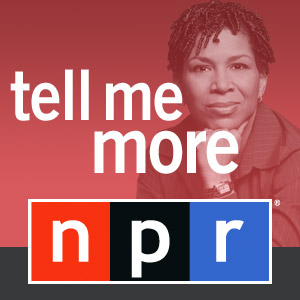The Great Migration, or the relocation of more than 6 million African Americans from the rural South to the cities of the North, Midwest and West from 1916 to 1970, had a huge impact on urban life in the United States.
Driven from their homes by unsatisfactory economic opportunities and harsh segregationist laws, many blacks headed north, where they took advantage of the need for industrial workers that first arose during the First World War. As Chicago, New York and other cities saw their black populations expand exponentially, migrants were forced to deal with poor working conditions and competition for living space, as well as widespread racism and prejudice.
During the Great Migration, African Americans began to build a new place for themselves in public life, actively confronting economic, political and social challenges and creating a new black urban culture that would exert enormous influence in the decades to come.
After the post-Civil War Reconstruction period ended in 1876, white supremacy was largely restored across the South, and the segregationist policies known as Jim Crow soon became the law of the land. Southern blacks were forced to make their living working the land as part of the sharecropping system, which offered little in the way of economic opportunity, especially after a boll weevil epidemic in 1898 caused massive crop damage across the South.
And while the Ku Klux Klan (KKK) had been officially dissolved in 1869, it continued underground after that, and intimidation, violence and even lynching of black southerners were not uncommon practices in the Jim Crow South.
Around 1916, when the Great Migration began, a factory wage in the urban North was typically three times more than what blacks could expect to make working the land in the rural South.

By the end of 1919, some 1 million blacks had left the South, usually traveling by train, boat or bus; a smaller number had automobiles or even horse-drawn carts. In the decade between 1910 and 1920, the black population of major Northern cities grew by large percentages, including New York (66 percent) Chicago (148 percent), Philadelphia (500 percent) and Detroit (611 percent).
While you're listening, be sure to answer the comprehension questions
NPR New: Tell me More
The Story Behind America's Great Migration
Host Michel Martin talks with Isabel Wilkerson, author of “The Warmth of Other Suns: The Epic Story America's Great Migration.” Wilkerson’s book explores the great migration of Blacks from the Jim Crow South to Northern locales in the US.
- How many African-Americans moved during the Great Migration?
- In 1900, what percentage of African American's lived in the South? By the end of the Great Migration, what percentage lived outside the South?
- When did the Great Migration begin? When did it end?
- What gap did Isabel Wilkerson want to fill in the historical narrative?
- What does Wilkerson mean by: “It was not just a migration, but a defection from the Jim Crow south”?
- What are some example of Jim Crow laws that Wilkerson gives?
- Why did George Starling leave?
- Why did Dr. Foster leave?
- According to Wilkerson, why did whites make an effort to keep black people from leaving the South?
- How does Wilkerson use Supply and Demand to explain the Great Migration, and efforts to stop it?
- How did economic interest lead the Federal government to “look away” from the Great Migration?
- What was the “fiction” accepted by white Southerners?
- Why did Wilkerson insist on doing the whole drive while recreating the journey of Dr. Foster?
- What were some of the assumptions about African-Americans during the migration?
- What was the reality about birthrates for the African-Americans in the northern cities?

